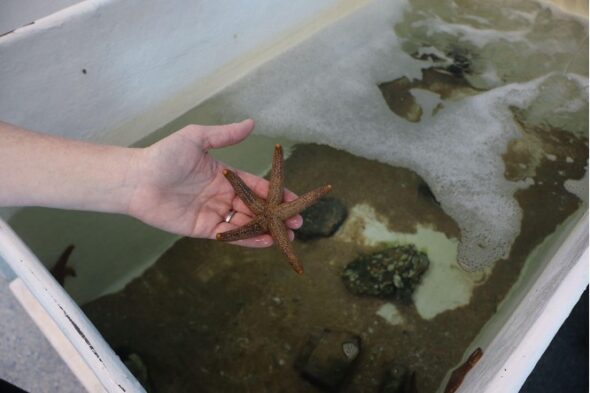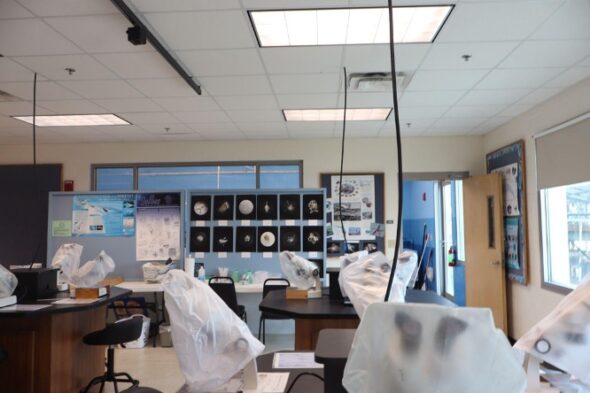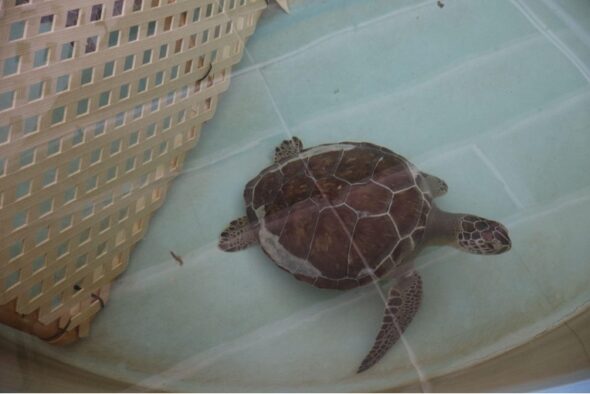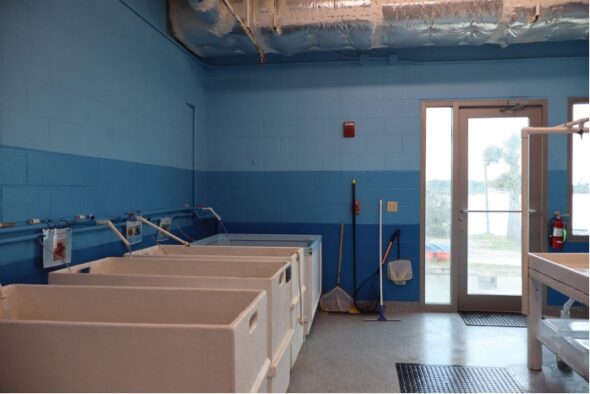By Emily Braunstein
The University of Florida’s Whitney laboratory for Marine Bioscience is advocating for marine life through education. They provide hands-on science education for K-12, undergraduate, graduate and doctorate students. Nearly 4,000 K-12 students were involved in Whitney’s science programs last year.
The Whitney Lab in Marineland, Fla., has hundreds of researchers, scientists, students and volunteers to aid the research and preservation of marine life. They are working to make a lasting change in the community by educating students and volunteers on marine life in Northeast Florida.

“We see this immediate excitement; they’ve never seen anything like this, they’ve never been taught this kind of stuff before,” said Amy Biedenbach, MS, Education Program Manager.
Whitney’s science education allows students to use microscopes, touch marine creatures and engage in science labs. The goal is to allow students to actually see what they are learning about.

Whitney’s programs provide science education to students who would not otherwise have access. Thirty-seven percent of the K-12 students involved in the Whitney educational programs are from Title I schools.
“If you can get a spark for science at a young age, that will carry throughout your life,” Biedenbach said.
The programs have smaller class sizes, which allows a more personalized and hands-on experience for students. The goal is to get students interested in science and the preservation of marine life so they want to be a part of making a positive change towards conservation.
“We see an excitement for science- students leave here excited,” Biedenbach said.

One of the draws of the Whitney lab’s education is their sea turtle hospital, which rehabilitates and releases sick or injured sea turtles in Northeast Florida. Students, volunteers and visitors are able to see the sea turtles that the lab is advocating to save.
“Even if science isn’t your career, as humans we are naturally curious, so part of the education here is the desire to understand the natural world,” said Cat Eastman, Whitney’s Sea Turtle Program Manager.
There have been paper straw and anti-plastic movements in recent years which have brought attention to the health of marine life, but the ability to actually interact with the animals gives people a new perspective, especially for students that have no prior knowledge of marine biology.
“I think one of our biggest impacts is community education and outreach; trying to help everyone be a steward in their own environment,” Eastman said.

There are currently 40 volunteers at the educational program and 25 at the sea turtle hospital, all from the St. Augustine and Northeast Florida community. There are also graduate PhD students working at the lab that provide insight to high schoolers interested in pursuing science.
“The teachers have told us that we are reaching the students from a science perspective,” Biedenbach said.
St. Johns County students make up the majority of students who visit, and they have the highest reported science scores in the area.
“When I see students have that ‘wow’ moment as a reaction to what we share with them, that is my favorite part,” Biedenbach said.




Be the first to comment on "Advocacy through education: Whitney Laboratory for Marine Bioscience"